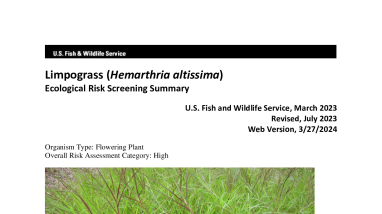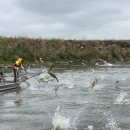Hemarthria altissima, Limpograss, is a plant species native to Africa, southern Europe, and western Asia. It has been introduced in North and South America and eastern Asia as a pasture grass. H. altissima reproduces more readily from vegetative propagation than it does from seed, and it is well-adapted to wet soils. The History of Invasiveness for H. altissima is classified as High due to its establishment in the wild in Florida, where it has escaped cultivation as a forage crop and has altered the composition of the Kissimmee River floodplain flora by outcompeting native wet prairie species. The climate matching analysis for the contiguous United States indicates establishment concern for this species. High climate matches were found primarily in the southern and western United States. The Certainty of Assessment for this ERSS is classified as Medium because although negative impacts of this species’ introduction have been documented in Florida, greater clarity on the risk H. altissima poses to other States and ecosystems would strengthen the certainty of this assessment. The Overall Risk Assessment Category for Hemarthria altissima in the contiguous United States is High.
Publication date
Type of document
High Risk
Media Usage Rights/License
Public Domain
Program


